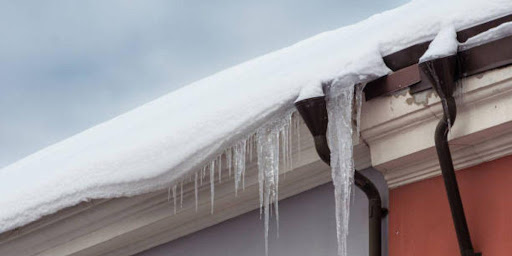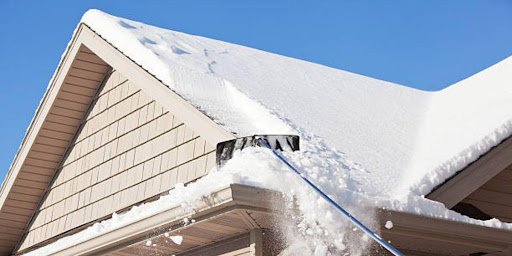Power Articles
Industry Elevating Content
Hot Roof and Cold Roof: All that You Need To Know

PowerArticles
July 10,, 2023
Are you curious about the differences between hot roofs and cold roofs? Whether you’re a homeowner, a contractor, or simply interested in the world of roofing, understanding these two distinct types can greatly impact your decision-making process. In this article, we will delve into the essential aspects of hot roofs and cold roofs, explaining their characteristics, advantages, and disadvantages, providing you with the knowledge you need to make informed choices regarding your roofing needs.
Hot Roof Systems
Hot roof systems are a type of roofing construction method designed to minimize heat transfer from the roof to the interior of a building. They are often used in areas with cold climates where preventing heat loss is crucial for energy efficiency and maintaining comfortable indoor temperatures.
Components and construction methods
A hot roof system consists of several components, including insulation materials, a vapor barrier, and a roofing membrane. The insulation is typically installed directly on the roof deck, preventing any gaps or voids that could allow heat to escape. The vapor barrier acts as a moisture barrier, preventing condensation and moisture build-up within the roof structure. Finally, the roofing membrane is applied over the insulation and vapor barrier, providing protection against weather elements.

Advantages and disadvantages
One of the main advantages of hot roof systems is their superior thermal performance. By eliminating gaps and thermal bridges, they effectively reduce heat loss and enhance energy efficiency. Hot roof systems also prevent ice dam formation, which can cause roof leaks and structural damage. Additionally, these systems can extend the lifespan of the roof by reducing temperature fluctuations and minimizing the risk of moisture-related issues.
However, hot roof systems also have some disadvantages. Since the insulation is located on the exterior of the roof deck, it can make repairs and modifications to the roof more complex and expensive. Furthermore, the lack of ventilation in hot roof systems can lead to improper management of moisture accumulation.
Common applications
Hot roof systems are commonly used in residential and commercial buildings, especially in areas with cold climates. They are particularly beneficial for buildings with flat or low-sloped roofs. Additionally, hot roof systems are often employed in energy-efficient and green building designs, where minimizing heat loss is a priority.
Cold Roof Systems
Cold roof systems are a type of roofing design that helps regulate temperature by minimizing heat transfer between the roof and the interior of a building. Unlike hot roof systems, which aim to retain heat within the building, cold roof systems are designed to allow for ventilation and prevent heat buildup.

Components and construction methods
Cold roof systems consist of several components and construction methods. The primary components include insulation, ventilation, and a roofing membrane. Insulation materials, such as fiberglass or foam, are installed directly beneath the roof, creating a thermal barrier. Ventilation is crucial in cold roof systems to allow for the circulation of air and prevent condensation. This is typically achieved through the use of soffit vents and ridge vents. The roofing membrane, often made of materials like asphalt shingles or metal panels, provides protection against the elements.
Advantages and disadvantages
One of the main advantages of cold roof systems is their ability to prevent overheating in warmer climates. By allowing air to circulate and dissipate heat, they help maintain a comfortable indoor temperature. Additionally, cold roof systems can help extend the lifespan of roofing materials by reducing heat-related damage. However, they may require more complex construction techniques and additional components, which can increase costs.
Common applications
Cold roof systems are commonly applied in regions with hot climates, where cooling costs can be significant. They are also used in buildings with temperature-sensitive contents, such as data centers or warehouses. Additionally, cold roof systems can be beneficial in locations prone to high humidity or condensation issues, as they help mitigate moisture-related problems.
Differences between Hot Roof and Cold Roof
Hot Roof and Cold Roof are two distinct methods of roof insulation and ventilation that significantly impact energy efficiency and moisture control. Understanding their differences is crucial for homeowners and builders to make informed decisions based on climate and cost considerations.
Insulation Placement and Purpose
Firstly, the placement and purpose of insulation differ between Hot Roofs and Cold Roofs. In a Hot Roof system, insulation is installed on the roof deck, directly under the roofing material. This ensures that the entire roof structure is within the building’s conditioned space. Conversely, in a Cold Roof system, insulation is placed on the ceiling or attic floor, creating a thermal barrier between the living space and the attic.
Ventilation requirements
Ventilation requirements also vary between Hot Roofs and Cold Roofs. Hot Roofs do not require ventilation because the insulation is within the conditioned space, preventing moisture buildup and heat loss. In contrast, Cold Roofs rely on proper ventilation to mitigate moisture accumulation and maintain consistent temperatures within the attic.

Impact on energy efficiency and moisture control
The choice between Hot Roof and Cold Roof significantly impacts energy efficiency and moisture control. Hot Roofs, with insulation placed directly under the roof, provide superior energy efficiency by minimizing heat transfer. Cold Roofs, on the other hand, may require additional insulation to achieve similar energy efficiency levels. Moisture control is generally better in Hot Roofs due to the absence of a ventilated attic, reducing the risk of condensation and mold growth.
Considerations for different climates
Climate considerations play a crucial role in determining the suitability of Hot Roofs or Cold Roofs. Hot Roofs are particularly beneficial in colder climates, as they prevent heat loss and ice dam formation. Cold Roofs, with proper ventilation, are more advantageous in warmer climates, as they help dissipate heat buildup and maintain a cooler attic environment.
Conclusion
In conclusion, understanding the key differences between hot roofs and cold roofs is crucial for anyone involved in the construction or maintenance of buildings. Hot roofs, with their insulation placed on the roof deck, provide effective thermal performance and prevent ice damming. On the other hand, cold roofs, with insulation installed between the ceiling and roof deck, offer benefits such as enhanced ventilation and reduced risk of condensation. By considering factors such as climate, budget, and building design, individuals can make informed decisions about which roof type best suits their needs.
Published By
PowerArticles
July 10, 2023